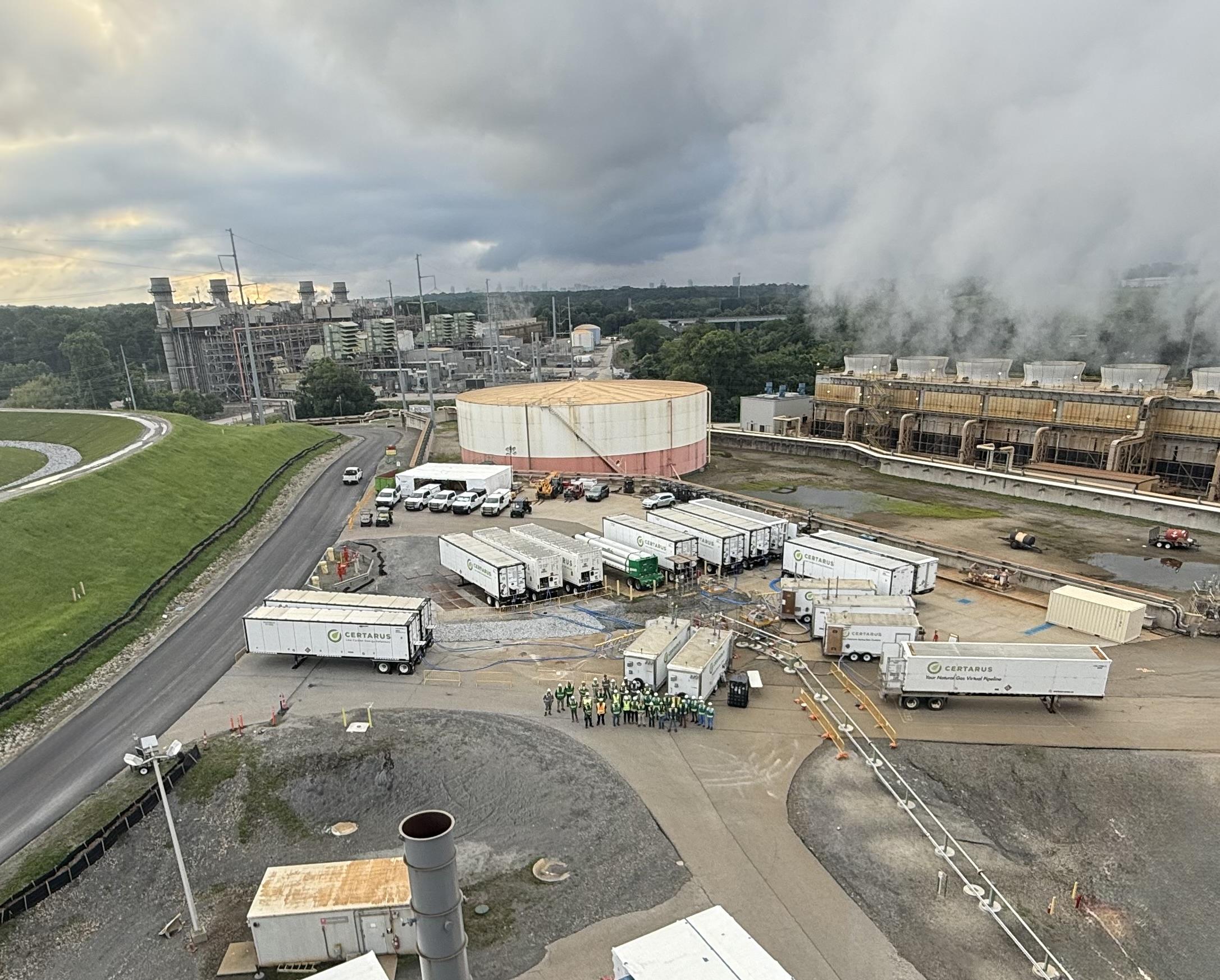
INSIGHTS
Hydrogen-Natural Gas Co-Firing: New Research on Auto-Ignition Safety for Gas Turbines

Index
Hydrogen Co-Firing as a Decarbonization Strategy
In recent years, numerous gas turbine-based power plants around the world have announced hydrogen co-firing initiatives as part of wider decarbonization roadmaps. Several have already completed successful demonstration projects with gas turbines operating on various concentrations of hydrogen-enriched natural gas (HENG) fuel.
Unlike natural gas combustion, using hydrogen does not emit CO2. As an example, the carbon footprint of a gas turbine operating on a HENG fuel mixture with 30% hydrogen by volume is more than 10% lower than using pure natural gas. This translates into hundreds of thousands of metric tons of annual CO2 avoidance for large power plants.
Progress and Challenges in Hydrogen Gas Turbine Technology
Over the last decade, gas turbine OEMs, including Mitsubishi Power, have made significant progress adapting gas turbine technology to handle high contents of hydrogen. All Mitsubishi Power’s advanced class gas turbines are capable of firing hydrogen blends up to 30%, with plans to achieve 100% by 2030.
Still, more work is required to address key technical challenges and gain widespread commercial acceptance of hydrogen co-firing. This includes further research to understand the behavior of hydrogen-natural gas fuel blends under different conditions.
One specific characteristic of the fuel gas mixture that is crucial to plant design and operational safety is auto-ignition temperature (AIT).
What is AIT and why is it important?
Understanding Auto-Ignition Temperature
AIT (or self-ignition temperature) is the lowest temperature at which a substance will spontaneously ignite, without an external ignition source, such as a flame or spark. At this temperature, the heat of the gas alone provides sufficient energy to initiate the chemical reaction required for combustion.
The Safety Challenges with Hydrogen in Gas Turbines
With the increasing use of hydrogen in advanced class gas turbines, there is a need to characterize the AIT of hydrogen-air and HENG mixtures under different pressure conditions so that design engineers can take pre-emptive steps to avoid conditions where unintended ignition occurs. An example of this could be in a hydrogen fuel blending system, where either a valve leak or system shutdown results in unburned fuel-air mixtures in a hot and pressurized environment.
The hydrogen molecule is smaller than that of methane, making it more prone to leaking. Additionally, hydrogen flames are not visible to the human eye, which means that if auto-ignition were to begin, it may go unnoticed by personnel for some time, increasing the risk of damage to critical equipment, such as piping and valves.
Pioneering new research into the auto-ignition characteristics of hydrogen
The Data Gap in High-Pressure Hydrogen Research
In 2020, design engineers from Mitsubishi Power sought to quantify the risk of hydrogen and natural gas fuel-air mixtures auto-igniting. Doing so is necessary to determine what protective measures (e.g., isolation components and/or nitrogen purge systems) are required to ensure plant safety.
But available data on the auto-ignition properties of hydrogen and hydrogen-natural gas mixtures was very limited -- with most of the existing research having been conducted on gases close to atmospheric pressure.
Advanced class gas turbines operate at pressures 25 times (or higher) than atmosphere. Thus, further research was needed to accurately assess the design risks of conditions that would be present in hydrogen-natural gas blending systems and make definitive conclusions about what measures were required to ensure safety.
Mitsubishi Power’s Collaboration with the University of Central Florida
Recognizing this, Mitsubishi Power began working with UCF and Professor Subith Vasu to conduct experiments and determine the ignition boundaries of both natural gas and HENG at 1-30 atm pressure and temperatures ranging from 350-620°C.
What did the testing reveal?
Surprising Results at Elevated Pressures
Hundreds of tests were performed with multiple hydrogen-air and HENG blends at various equivalence ratios. Experiments were also performed on 100% natural gas to validate test results and data collection methods cited in prior published literature.
As expected, for all mixtures tested, AIT decreased with increasing pressure. However, a somewhat surprising result was observed when pressure was increased. It was discovered that natural gas is more sensitive to elevated pressures compared to hydrogen (i.e., the AIT of natural gas decreased more at high pressures than hydrogen).
How Hydrogen and Natural Gas Differ Under Pressure
At atmospheric pressure, the AIT of hydrogen is approximately 100°C lower than that of pure natural gas. But in a HENG mixture with 30% hydrogen by volume, AIT was higher compared to 100% natural gas. At pressures of 25 and 30 atm, natural gas ignited at 413°C and 375°C, respectively. The HENG fuel blend at 25 and 30 atm, on the other hand, ignited at 438°C. Pure hydrogen ignited at 400°C at these same pressures.
The results were contrary to expectation and indicate that as hydrogen concentration in the fuel mixture increases (at elevated pressures), an inflection point is reached.
Several possible explanations for this phenomenon have been proposed. But work is still ongoing to identify the exact cause.
Quantifying Auto-Ignition Delay Time
Similar tests were performed to quantify the auto-ignition delay time (AIDT) of natural gas, hydrogen-air, and various HENG mixtures. AIDT is the amount of time between when a gas reaches the right temperature and pressure conditions for auto-ignition and when it starts to burn on its own—without any spark or flame.
Like AIT, developing a better understanding of AIDT is important when designing systems used to transport hydrogen and HENG in co-firing applications.
Looking ahead: Accelerating decarbonization with hydrogen co-firing
The Importance of Understanding Flammability Limits
Knowing the boundaries of flammability for hydrogen and HENG fuel mixtures can support system design and safety controls to reduce the risk of unintended burning. Such events could negatively impact the application of hydrogen fuels in gas turbine-based power plants and hinder widespread efforts to decarbonize.
Continuing Research to Enable Commercial Adoption
Research between UCF and Mitsubishi Power is still ongoing. The results observed during the initial testing phase, which were unexpected, show that further work is needed to better understand the behavior of HENG fuel under pressure and promote commercial acceptance of hydrogen co-firing.
Over the last two years, Mitsubishi Power and UCF have published multiple papers focused on this testing campaign, including for the American Society of Mechanical Engineers (ASME) and the American Institute of Aeronautics and Astronautics (AAIA). The latest manuscript has been published in the ASME Journal, which is reserved for papers of the highest technical value.
The decision to publicize the test results (as opposed to keeping them internal/confidential) illustrates Mitsubishi Power’s commitment to safely and responsibly advancing innovative hydrogen solutions, and accelerating decarbonization of power generation at scale.
Unlock the full study and explore critical ignition characteristics of hydrogen-natural gas blends under real-world conditions.
Get free access to Mitsubishi Power and the University of Central Florida's detailed research, recently published in the ASME Journal. Understand ignition boundaries, design implications, and safety measures essential for the future of hydrogen-based power generation.
Download the Full ASME Journal Study here.
Georgia Power and Mitsubishi Power collaborate on the world’s largest hydrogen fuel blending demonstration to date on an advanced class gas turbine. Latest test builds on 2022 test as company continues to advance innovative R&D, cleaner natural gas technologies to serve Georgia electric customers.



